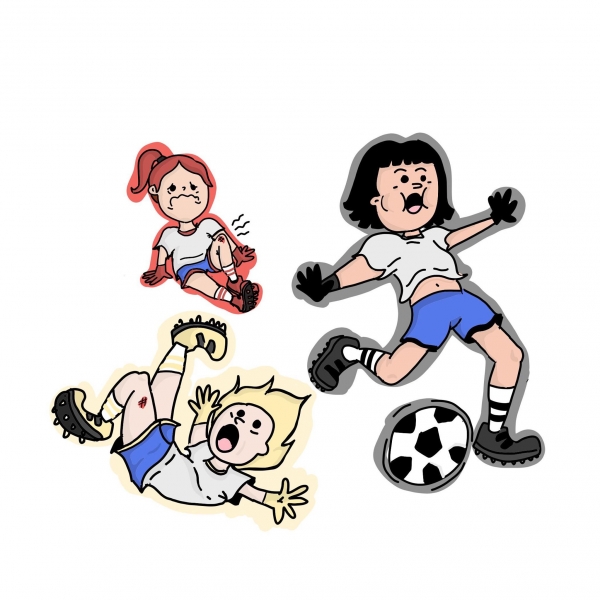Whether you celebrated France’s win or are recovering from Germany’s early exit, there’s no denying that the 2018 FIFA World Cup had its fair share of momentous upsets, brilliant goals, and stirring controversies. For young soccer enthusiasts, the global tournament that comes around only once every four years is an exciting time. Yet, while it inspires adolescents to get out and exercise—a phenomenon known as the ‘trickle-down effect’—it may also negatively impact their health.
A new study co-authored by McGill researcher and clinician scientist Isabelle Gagnon examined injuries sustained by boys and girls from the ages of 13 to 16 between 1999 and 2014. Using patient data from May and June, Gagnon found that the Montreal Children’s Hospital and Hôpital Sainte-Justine saw an increase in the number and severity of soccer-related injuries during World Cup years.
Interestingly, this trend was greatest for boys playing non-organised soccer, with 17.2 per cent more injuries during World Cup years; comparatively, boys playing organised soccer had no significantly greater risk of injury. It is unclear whether the increased danger lies in rowdier pick-up games or an increased number of casual matches.
“Organised soccer is something that’s already fixed in time, such as practices or games,” Gagnon said.
Participation in organised soccer is thus less severely affected by the World Cup because the times for practices and games are pre-determined. Unlike organised soccer, pick-up soccer has no referees to ensure the players are abiding by the rules and not making reckless plays. Pick-up games in the park are more likely to occur during soccer-crazy World Cup years when game participation can increase without the restraints of an organised system.
Adolescent girls, on the other hand, are not nearly as affected by soccer-related injuries as their male counterparts. Not only do they sustain fewer injuries while playing, but the increase in injuries during World Cup years among girls was too slight to be statistically significant.
“Perhaps girls are not engaging in pickup soccer as much as boys [are],” Gagnon said.
Still, both girls and boys have a high risk of experiencing concussions and other contact injuries in soccer. Non-contact injuries to the knees and ankles are also common as a result of twisting and changing direction.
“Soccer is a big knee-injury generator,” Gagnon said. “There are lots of ligaments and muscles around the knee, and that means lots of sprains and strains.”
Remarkably, while the rate of concussions and other contact injuries increased during World Cup years, the frequency of many non-contact incidents decreased. In boys’ non-organised soccer, injuries to the head and neck increased by roughly seven per cent while fractures increased by over 10 per cent. However, strains and sprains, which are common non-contact injuries, decreased by almost 20 per cent. The researchers suspected that this could be due to bolder play in pick-up games during the World Cup. Coupled with likely emboldenment from watching the World Cup, this might explain why contact injuries increased.
While Gagnon would like for children to continue playing non-organised soccer, she insists that it is important to have injury prevention and education programs in place.
Although female soccer players weren’t at an increased risk of injury during the World Cup, they always face a particularly high chance of knee and ankle injury due to factors such as structural alignment and hormone fluctuations. While there are more injuries in male soccer overall, individual female soccer players have a higher chance of being seriously injured. It is therefore important to focus on injury prevention strategies, such as education, balance, and strength training for both male and female soccer players.








